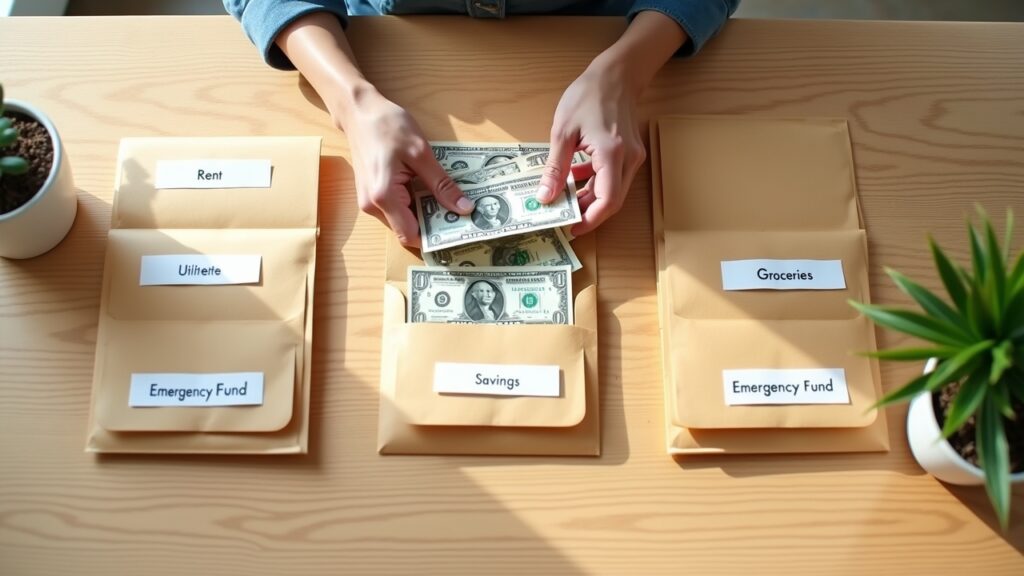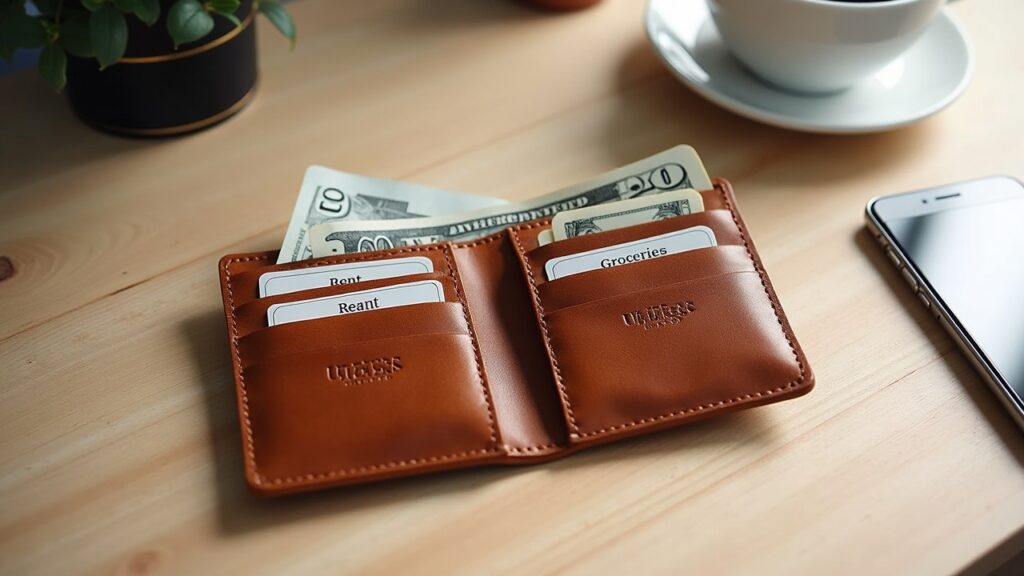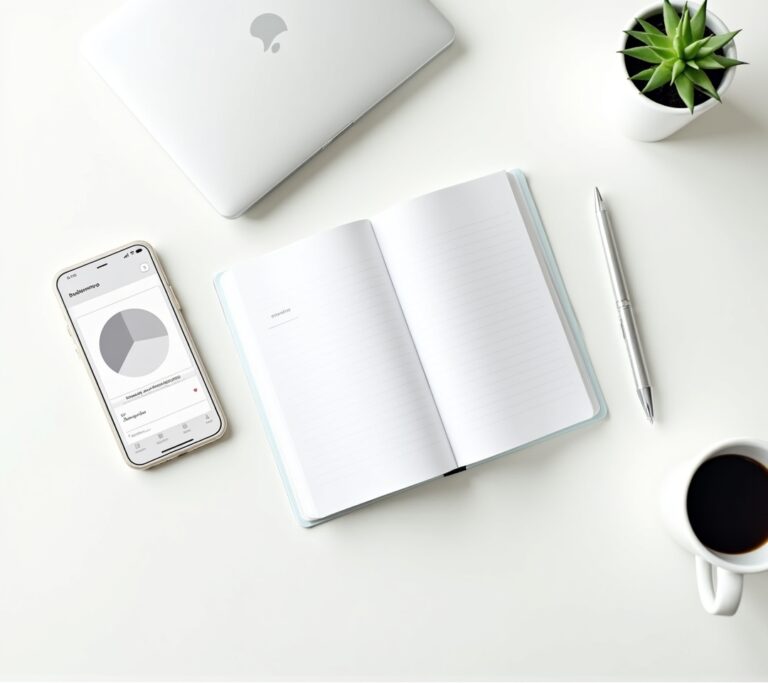Advertisements
Did you know that 78% of Americans live paycheck to paycheck? I used to be one of them until I discovered something that completely changed my relationship with money. After years of wondering where my paycheck disappeared to every month, I finally found a system that actually works!
The envelope budgeting method saved my financial life. Seriously. I went from overdraft fees and credit card debt to actually having money left over at the end of the month.
Let me share how this simple cash management system transformed my spending habits and helped me take control of my finances once and for all.
What Exactly Is the Envelope Budgeting System?

The envelope method is basically exactly what it sounds like – you literally put cash in envelopes for different spending categories. When I first heard about it, I thought it was way too old-school.
My grandma used to do something similar with mason jars! But here’s the thing – it works because it’s so darn simple.
You take your monthly income, divide it into spending categories like groceries, gas, entertainment, and put the actual cash into labeled envelopes. When the envelope’s empty, you’re done spending in that category for the month. No ifs, ands, or buts about it.
How I Started My Cash Envelope Journey
I’ll never forget my first attempt at envelope budgeting. It was a complete disaster! I withdrew $800 from the ATM and felt like everyone was staring at me.
Then I got home and realized I didn’t even have envelopes. So there I was, using my kids’ birthday card envelopes with cartoon characters on them. My “grocery money” envelope had Spiderman on it.
But you know what? Even with my makeshift system, something clicked. For the first time, I could physically see how much money I had left for groceries when I opened my wallet.
The Dave Ramsey envelope system suggests starting with just a few categories. I started with three: groceries, gas, and “fun money.” That was manageable enough that I didn’t feel overwhelmed.
Setting Up Your Budget Categories
Here’s where most people mess up (myself included). They try to create an envelope for every single expense. Trust me, you don’t need 47 different envelopes!
Start with your variable expenses – the ones that fluctuate each month:
- Groceries and household items
- Gas or transportation
- Entertainment and dining out
- Personal care (haircuts, etc.)
- Clothing
Fixed expenses like rent and utilities? Those can stay in your bank account since they’re the same each month anyway.
I learned this the hard way when I tried to pay my electric bill with cash. The poor customer service rep looked at me like I’d lost my mind!
My Biggest Envelope Budgeting Mistakes
Oh boy, where do I even start? My first month, I put way too much in entertainment and not enough in groceries. By week three, I was eating ramen noodles while my “fun money” envelope mocked me from the counter.
Another huge mistake was forgetting about irregular expenses. You know, things like oil changes or birthday gifts that don’t happen every month. I had to “borrow” from other envelopes, which totally defeats the purpose!
Now I keep a “miscellaneous” envelope for those random expenses that pop up. Game changer.
Making the System Work in a Digital World
Let’s be real – carrying around a bunch of cash envelopes isn’t always practical. I’ve had some awkward moments trying to dig through my purse for the right envelope while people waited behind me in line.
These days, I use a hybrid approach. Big categories like groceries still get physical envelopes, but smaller ones I track with apps like YNAB (You Need A Budget).
Some folks swear by digital envelope apps like Goodbudget or Mvelopes. Whatever works for you! The important thing is sticking to the concept – when the money’s gone, it’s gone.
The Psychology Behind Why This Actually Works
Here’s something interesting – studies show we feel more “pain” when spending cash versus swiping a card. It’s true! Handing over actual bills makes you think twice about that impulse purchase.
I noticed this immediately. That $5 coffee feels way different when you’re pulling a five-dollar bill from your “fun money” envelope versus just tapping your card.
The envelope system creates natural spending limits. There’s no “I’ll just put it on the card and figure it out later” mentality that got me into trouble before.
Tips That Made All the Difference
After doing this for two years now, here’s what really helps:
Always withdraw your cash on the same day each month. I do mine on the 1st – it’s become like a little ritual. Make it part of your routine.
Keep a small notebook to track what you spend from each envelope. Yeah, it’s extra work, but it helped me see patterns in my spending. Turns out I was blowing way too much at Target on “necessities.”
Don’t be too rigid! If you have money left in an envelope at month’s end, celebrate! I either roll it into next month or put it toward debt. Both feel amazing.
Your Path to Financial Freedom Starts Here

The envelope budgeting method isn’t just about restricting yourself – it’s about taking control. After six months, I’d paid off two credit cards and actually had an emergency fund!
Sure, it takes some getting used to. You might feel weird carrying cash at first, or frustrated when you can’t buy something because the envelope’s empty. But that discipline is exactly what makes it work.
Remember, personal finance is personal. Maybe you’ll love physical envelopes, or maybe you’ll go fully digital. The key is finding what clicks for you and sticking with it.
Ready to transform your financial life? The envelope method might just be your answer. For more budgeting tips and financial wisdom, check out other posts at Cashflow Zen – we’re all about making money management actually manageable!




[…] remember – even us financial bloggers at Cashflow Zen started somewhere. Check out our other posts for more down-to-earth money tips that actually work in real […]